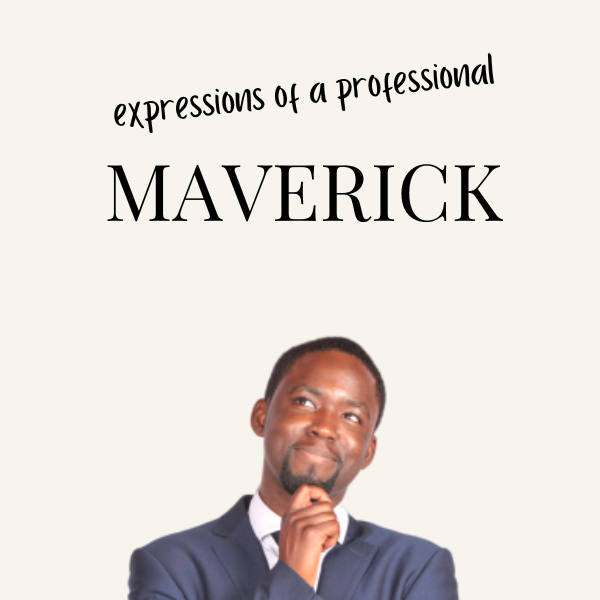How to develop your personal brand
The personal brand industry has been in existent since the birth of society, as people found ways to stand out and develop a form of brand awareness. Since the internet was born on the 1st of January 1991, the personal branding phenomena has grown exponentially. This post is being written to help those seeking to develop a strong personal brand how to do it. Personal branding is your ability to market yourself to a specified audience. It defines your identity and how to operate as an individual. Everything you do will represent your personal brand by default. Therefore, if you want to develop a distinct personal brand, you need to be intentional about what you do. These intentions should be aligned to a goal or business your working towards. There are key steps you need to take in order to do this successfully. Developing a strong brand includes having a:
- Clear message
- Consistent identity
- Congruent set of content
- Credibility
I’ve taken these 4 points from Rhonda Swan, (owner of the unstoppable family) but I will expand on these based on my experiences.
A Clear message

Personal branding in relation to the internet starts with the first webpage you are present on. This could be from Bebo back in the day, Facebook or even your website. Whether you deleted content related to you or not, everything is kept. The smart personal brand is able to distinguish their core values, mission statement and core services from the beginning. The clearer you are with your message, the more likely people will be drawn to you. In order to help me develop a clear message, I produced a branding document. I took this concept from a graphic designer who developed my brand “Masteri.” I had learned so much through that process that I adopted the same methodology for myself and others. It clearly sets out the identity of your brand. But before you create a branding document, you must first be confident about how you want to be perceived. Here are some tips to get you started:
- Research top brands in your industry and check out their website, social media platforms, products and services, core values and anything related to their brand
- Think about your target audience and look at what opportunities you can capitalize upon using your brand, what is the gap in the market?
- Look for people in your target audience, based on the ideas of the top people in your industry, and highlight their demographic, psychographic and consumerist behaviour qualities. Find out their core pains and desires by conducting a survey or finding it on websites like Quora
- Develop your brand story thinking about these things in particular:
- Background to who you are
- The core problem you faced
- The summit and realisation you made
- The successes you achieved afterward
- Based on your information, start thinking about your brand name and what title you want to give yourself I.e. Your brand name could be “Compose” and your title could be “Founder and Business Consultant”. Don’t just pick anything but rather think of things that naturally fit your niche market
- Once you have done all of this you can develop your branding package which will involve the following:
- Mission statement
- Target audience
- Brand essence
- Keywords
- Products and Services
- Tone of Voice
- Logo
- Body Fonts and Header Fonts
- 3 Primary colours and 2 secondary colours
- Brand personality
- Look and Feel
This will clearly highlight to you and creatives working for you, who you are, what you do, and how your brand feels. It makes things so much easier in the long run and helps you or others to design aspects of your brand identity online. In addition, you may want to think about your one-liner statement that describes your brand package. This is especially effective if you are going to networking events. You need to be able to clearly state the following in your statement:
- Who you are and what you do
- Who your target audience is
- How you do it
This could be classed as an elevator speech. Here is an example:
“My name is Michael Tabirade and I am Founder and Business Consultant for the company “Masteri Group Ltd.” I empower and educate self-starters in their journey towards becoming self-made. This is done via dynamic and engaging Business and Leadership coaching, seminars and e-learning products”
As you have noticed I have clearly stated who I am (Michael Tabirade), what I do (Founder and Business Consultant), who it is for (self-starters; Google’s definition is: a person who is sufficiently motivated or ambitious to work on their own initiative without needing direction) and how I do it (via dynamic and engaging Business and Leadership coaching, seminars and e-learning products).
Consistent Identity

Once you have developed a clear message, you need to be able to produce content that is consistent with your brand. The brand package helps to develop this clarity in order for you to be consistent. Consistent, is described as many different things but this is what stands out:
- Using the same logo across all your online platforms
- Using the same or similar media images across all your online platforms for their appropriate sizes
- Posting consistently or timely
- Spreading a consistent message across all your platforms
- Using the platform appropriately based on its purpose
If you have done your brand package well and you are clear of your messaging, pay someone or develop a logo you can use. You can find logo designers on fiverr.com, 99designs.com or within your local network. If you want to do it yourself and you want an easy text-based Sans serif or Serif logo, you can check for fonts on dafonts.com and type in your brand name to see what it looks like in those fonts. Once you’re happy with one, download it, put it onto your computer and create it in Microsoft Word. The exact same can be done on Google Docs where you can download fonts from a Google Doc online. That’s how I initially created my “MT:” logo. You also have the option of creating a really nice logo on canva.com using their predesigned logo templates. Be conscious that you may need your logo in at least 2-3 colours, including black and white, plus a particular brand colour. In addition, make sure you produce your logo for different social media and website platforms so the images are not pixelated. Export them as either a JPEG or PNG file. Next, you need to develop media images of yourself or for your brand to help create a consistent identity. You can hire a professional photographer to produce images for you, or if you are confident do them yourself. Make sure these images are super clear and that you have two versions of them:
- A full image of you with its background (white, black and/or scenery)
- A full image of you without the background
This will prove useful when you have to use it for different reasons. Once you have done this create different headers for each of your online platforms according to the recommended sizes the platform recommends. You’re website and social media platforms should look pretty much the same across the board, but adapted for their platforms. You need to be able to post consistently and timely for your platforms. You may want to produce a content calendar for each one to help you plan and schedule your content. This is basically a table that records the content title, date of release, subject matter/theme and tags. You can add what you want to it. This content calendar is particularly useful when creating weekly content for a blog, podcast or YouTube. But please note for some people a content calendar may feel restricting, the best thing to do at least is to have a list of daily inspirations that inspire you to produce content.
If you are posting daily, let’s say on Instagram or Twitter, then a content calendar is useful for highlighting the themes/type of post for each week or month. When to post varies from platform and industry, so the best thing to do is to see what others in your industry are doing, and see if that works for you. I usually stick to these times: 07:30 – 08:30 12:00 – 14:00 18:00 – 20:00 (Please bear in mind it may be different for you). When posting messages online, you need to make sure that you prepare posts that are aligned with your brand. In essence, this means that you need to be genuine and honest with your posting, aiming not to be someone else or posting things you usually wouldn’t. An alien message sticks out like a sore thumb. The more vulnerable and personal you are, the better, however folly and immaturity may not work in your favour dependent upon your niche.
Congruent set of Content

This is a very easy one to understand. You need to make sure that all your media produces the same messages and is consistent with your brand essence, mission, the tone of voice etc. So if you are a motivational speaker, make sure your material is motivational and educational. If you are a fashion blogger, post things relevant to the style of fashion you are portraying. Now, there may be some instances where you may want to add something else that is not related to your niche such as comedy, opinions or something political. I would say if you have developed a personal brand and your audience is used to you talking about these topics, then go ahead, if not it’ll look out of sync. Opinion posts are great if it relates to your audience’s lifestyle especially in light of any current affairs, comical posts are great for engagement if it relates to your topic, and political posts are great if it disrupts your industry dramatically. Your brand personality will determine what you should and should not do. What does work for many people is that they use their social media stories to put more casual and engaging posts, and their staple posts are put in their social media feeds. So, for example, I may put a comical or opinion based post on my Instagram story, but remain to post inspirational and business based quotes and pictures on my Instagram feed.
If your brand involves showing your lifestyle, then focus on posting images with other people, or of you doing things related to your niche area. As an example, you may post pictures with friends and family, or of your coaching, speaking or building a product. You may want to post videos documenting the journey or even directing a question to your audience. One thing that works really well, especially with YouTube is post “how to” videos. When you get good at this and do it frequently, you’ll get a lot of engagement and inquiries about your business.
Credibility

The last ‘C’ is focused on credibility. Credibility is defined as the quality of being trusted or believed in. This is a great starting point, because it means you should focus on doing things that allow people to trust you. If you complete all of the other Cs highlighted above, you’ll get closer and closer towards becoming seen as a credible source. Credibility is built over time and here are some things you should be doing in order to build your credibility.
- Developing consistent high-quality content that educates and empowers people
- Producing content that shows you in your element i.e. coaching, speaking etc.
- Showing testimonials of people you have helped in the past
- Displaying any qualifications or experience you have gained over the years
Developing consistent high-quality content that educates and empowers people
Developing high consistent content is not an easy task. In order to do this well, you need to make sure that you have enough ideas generated so that you can continue to generate consistent content. One way we can do this is by going onto Amazon and checking the books within your niche, discovering what topics have been used in different books. This is a great way to validate what topics your industry leaders are focusing on. Another way you can develop content is by checking what core questions your audience is asking, using websites quora.com and seeing what key core questions pop-up again and again. You can also ask people within your network “What is the one thing they would like to know about “Insert Key topic“?”
Once you have ideas for your content, you also want to be familiar with the keywords that you need to use for your industry. The way you do this is by brainstorming keywords that you think your industry uses. You can also check keywords in Google’s search engine but seeing what related topics pop up at the bottom of the page, as well as what words are auto-suggested once you start typing a specific keyword. Google’s keyword planner is also a great way to check what keywords get the most traffic (please note that this is forPage traffic rather than for organic traffic).
Once you have key topics, niches and keywords that you want to talk about, starting listing titles of articles that you could start talking or writing about. Some people prefer to create a content calendar which may be very useful For organising and structuring their content, but this is not necessary especially if you want to maintain a creative flow. It’s important to know that if you want to stay relevant as a credible personal brand, you need to be posting at least every single week at a minimum; ideally 2 to 7 days a week. This is because if Google sees that you’re posting relevant high-quality content specific to your audience, and you’re answering their questions, then you’re more likely going to be favoured by their ranking algorithm.
Producing content that shows you in your element i.e. coaching, speaking etc.

In light of the new visual age, it’s very important to make sure that you keep pictures and videos of what you are doing. This is why Instagram is so popular and rated the most engagement social media platform. It allows people to see what everyone is doing. I’m not suggesting that you need to use Instagram, what I am saying is that you need to get really good at filming and documenting your journey as a personal brand, entrepreneur or self-starter. Some may say it enhances the narcissist movement, but whether you’re a narcissist or not this definitely works. Produce images that create clean headers and photos for your social media and web platforms. Create videos that introduce who you are and educate and empower your audience. This will make you stand out as a credible and strong personal brand.
As a personal brand these are the key things that you need to be focusing on when it comes the picture and video:
- Make sure you have as many clean stock images of yourself as possible. This includes headshots, mid-body shots, and full body shots. Preferably this should against a clean white background or alternatively, somewhere that looks attractive e.g. somewhere on holiday or minimalist office space. Remember to make sure that you have both portrait and landscape photos so that you can manipulate and use them for different social media platforms
- Make sure you have a promotional video that describes who you are, what you do, who you’re doing it for and how you do it
- Create regular videos, podcasts and/or articles that help your audience solve their problems. Create Topics on”How tos,” “Comparisons,” “Top tens,” “Opinions” And “Documenting your journey”
This should be enough to make People feel confident that you are a credible personal brand who can help them solve their specific key issues.
Showing testimonials of people you have helped in the past
In the beginning, many entrepreneurs find it difficult to attract customers. But the hidden secret behind doing this is making sure that you showcase testimonials in the form of written text and/or video. The reason why this is important is that people believe what other people say about specific products or services. As an example, If you go on Amazon looking for a specific product, you probably read all of the comments verifying and validating whether that product is good or not. The joke is even if you have 99 really good testimonials or reviews, and you find one really bad review, this may push you away from buying the product. The same goes if you’re developing your own business, people want to see if you’re legitimate, and your legitimacy is defined by testimonials that you gather over the years, months or weeks. To get testimonials at the beginning, You must be willing to do work for free or for cheap. Get as many gigs as possible so that at the end, provided that you get results, you can get testimonials from your clients highlighting how well you were in terms of providing your specific product or service. The more testimonials you gather and showcase on your social media platforms, email lists, and other forms of media, the better your credibility. One of the best ways to advertise products and services is the use customer testimonial videos to highlight the benefits of your products or services.
Displaying any qualifications or experience you have gained over the years

This goes without saying, we live in a world where we want to make sure that we’re dealing with the right sort of people, and therefore we categorise people by criteria. These criteria come in the form of the type of qualifications that one has. Qualifications are validated by certifications, commercial and recognised programs, and other things that legitimise the skills that you are claiming to have. But there is one form of qualification that should not be forgotten, and that is the experience that you have. It’s not about boasting, It’s more about showing people that you are qualified for a specific job role. The best way to think about it, is to see yourself as you’re updating your LinkedIn profile. Think of the things that you’ve done over the years, what the key tasks and responsibilities were, as well as what you have achieved.
This is been an extensive article on what is required to a become strong personal brand. If you follow these Four key themes, I promise your brand presence and awareness will increase dramatically. Remember everyone has a personal brand, is just about how you present it to the world. That presentation is predicated on systematic execution but also the artistic nature of a passionate creative. My final advice would is to be bold, be daring and don’t be afraid of letting the world know who you are. People connect with genuine people, so be true to yourself and never compromise for any false representations. I would refer back to this article if you ever forget what is required in order to be a strong personal brand that stands out. If your passionate about becoming a strong and profitable personal brand, enter your information below and get a free training on how you can get started straight away.








7 Comments
Comments are closed.